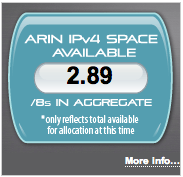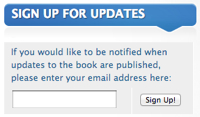 If we step back to before 1993, publishing and finding content on the Internet was a somewhat obscure, geeky thing that a very few people cared about and very few knew how to do. It involved gopher servers, ftp sites, archie, veronica, WAIS, USENET newsgroups, etc., and this "World-Wide Web" service primarily demonstrated via the server at info.cern.ch. It was an amazing period of time for those of us who were there, but the number of users was quite small.
If we step back to before 1993, publishing and finding content on the Internet was a somewhat obscure, geeky thing that a very few people cared about and very few knew how to do. It involved gopher servers, ftp sites, archie, veronica, WAIS, USENET newsgroups, etc., and this "World-Wide Web" service primarily demonstrated via the server at info.cern.ch. It was an amazing period of time for those of us who were there, but the number of users was quite small.
Then NCSA released Mosaic in 1993 ... and suddenly everything changed.
Anyone could create a web page that "regular" people could see on their computers. Anyone could download Mosaic and use it. Anyone could share their sites with the installation of server software.
The Web was truly born into public consciousness... the creation of Web-based content was democratized so that anyone could do it... the creativity of developers was unleashed... a zillion new business models were thought of... and the Internet fundamentally changed.
Fast-forward to today...
... and the "Web" is still predominantly a document-based system. You make HTTP queries to retrieve pages and send HTML and XML documents back and forth between web browsers and web servers.
Separately, we have a world of telecommunication apps that have moved to IP. These are not just voice, but they are also video, instant messaging, data-sharing. They have moved so far beyond what we traditionally think of as "telecommunications". The apps use wideband audio, HD video, white boarding, sharing and so many capabilities that cannot have even been remotely imagined by the creators of the PSTN and all the legacy telcos and carriers. They are "rich communications" applications that have severely disrupted the traditional telco world.
The problem is that creating those rich, real-time communications apps is somewhat of a black art.
It is the realm of "telephony developers" or "VoIP developers" who can understand the traditional world of telcos and can interpret the seven zillion RFCs of SIP (as all the traditional telcos have glommed all sorts of legacy PSTN baggage onto what started out as a simple idea).
Deploying those rich communication apps also involves the step of getting the application into the hands of users. They have to download an application binary - or install a Flash app or Java plugin into their browser. Or on a mobile device install an app onto their mobile smartphone.
The world of rich communication experiences is held back by development problems and deployment problems.
Suddenly, any web developer can code something as easy as this into their web page:
------
$.phono({
onReady: function() {
this.phone.dial("sip:9991443046@sip.example.net")
} } );
------
Boom... they have a button on their web page that someone can click and initiate a communications session ... in ANY web browser. [1 - this is not pure "WebRTC" code... see my footnote below.]
Using JavaScript, that pretty much every web developer knows... and using the web browsers that everyone is using.
And without any kind of Flash or Java plugins.
Boom... no more development problems. Boom... no more deployment problems. [2]
WebRTC is about baking rich, real-time communications into the fabric of the Web and the Internet so that millions of new business models can emerge and millions of new applications can be born.
It is about unleashing the creativity and talent of the zillions of web developers out there and turning the "Web" into more than just a document-based model but instead into a rich communications vehicle. It's about moving these apps from an obscure art into a commonplace occurrence.
We really have absolutely no idea what will happen...
... when we make it as simple for ANY developer to create a rich, real-time communications experience as it is to create a web page.
But we're about to find out... and done right it will fundamentally change the Internet again.
If we think the legacy telco crowd are upset now about how "VoIP" has screwed them over (from their point of view), they haven't seen anything yet. WebRTC/RTCWEB doesn't need any of their legacy models. It bypasses all of that in ways that only the Internet enables. It is NOT shackled to any legacy infrastructure - it can use new peer-to-peer models as well as more traditional models. And it goes so far beyond what we think of as "communication" today. [3]
I see it as the next stage of the evolution of the Internet, disrupting to an even greater degree the business models of today and changing yet again how we all communicate. The Internet will become even more critical to our lives in ways we can't even really imagine.
THAT is why RTCWEB (in the IETF) and WebRTC (in W3C) are so critically important ... and so important to get deployed.
[1] The code I'm showing is for a library, "Phono", that in fact will sit on top of the WebRTC/RTCWEB protocols. It is an example of the new apps and business models that will emerge in that it makes it simple for JavaScript developers to create these apps. Underneath, it will use the rich communications protocols of WebRTC/RTCWEB. Someone else will come up with other ways to do this in JavaScript... or python... or ruby... or whatever language. But because they will all use the WebRTC/RTCWEB protocols, they will interoperate... and work in any browser.
In full disclosure I should also note that Phono is a service of Voxeo, my previous employer.
[2] And BOOM... there go the heads exploding within the legacy telco crowd when they start to fully understand how badly the Internet has rendered them even MORE irrelevant!
[3] Note that a WebRTC app certainly can communicate with the traditional PSTN or other legacy systems. My point is that it is not required to do so. One usage of WebRTC will, I'm sure, be to "web-enable" many VoIP systems (ex. IP-PBXs) and services. But other uses will emerge that are not connected at all to the PSTN or any legacy systems.
Image credit: dmosiondz on Flickr
If you found this post interesting or useful, please consider either:
 Today marked another milestone in the ongoing exhaustion of IPv4 addresses – the American Registry for Internet Numbers (ARIN) entered Phase 2 of its IPv4 Countdown Plan meaning that it has only 3 “/8″ blocks of IPv4 addresses left. In fact, the counter on ARIN’s Countdown page shows only 2.89 /8 blocks left.
Today marked another milestone in the ongoing exhaustion of IPv4 addresses – the American Registry for Internet Numbers (ARIN) entered Phase 2 of its IPv4 Countdown Plan meaning that it has only 3 “/8″ blocks of IPv4 addresses left. In fact, the counter on ARIN’s Countdown page shows only 2.89 /8 blocks left.




 Would you like to be notified when updates are made to “Migrating Applications to IPv6“? If so, there’s a nifty little sign-up box over in the right sidebar that will add you to an email distribution list that I will use ONLY to alert you to news about the book. Info about updates will also be posted here to the book’s blog, of course, and will also appear on
Would you like to be notified when updates are made to “Migrating Applications to IPv6“? If so, there’s a nifty little sign-up box over in the right sidebar that will add you to an email distribution list that I will use ONLY to alert you to news about the book. Info about updates will also be posted here to the book’s blog, of course, and will also appear on 

